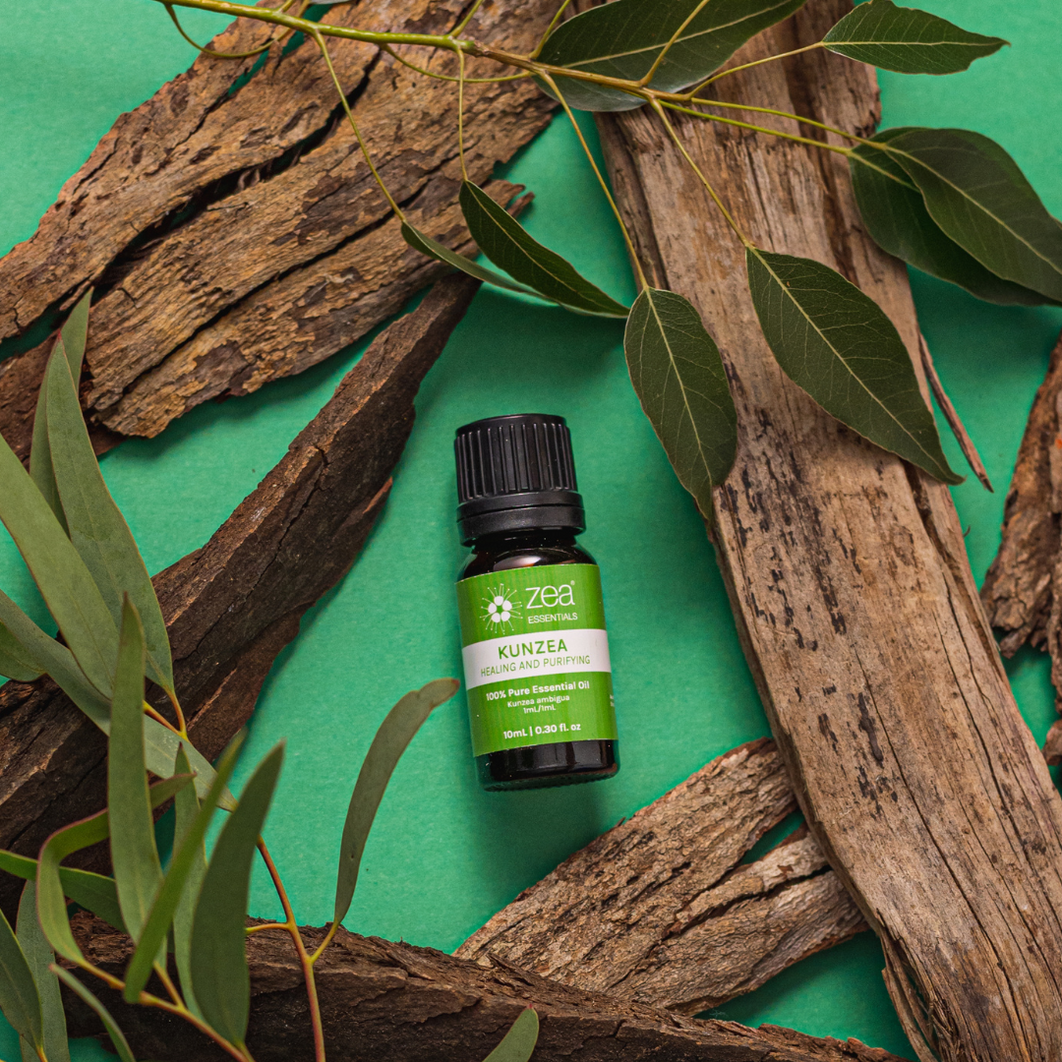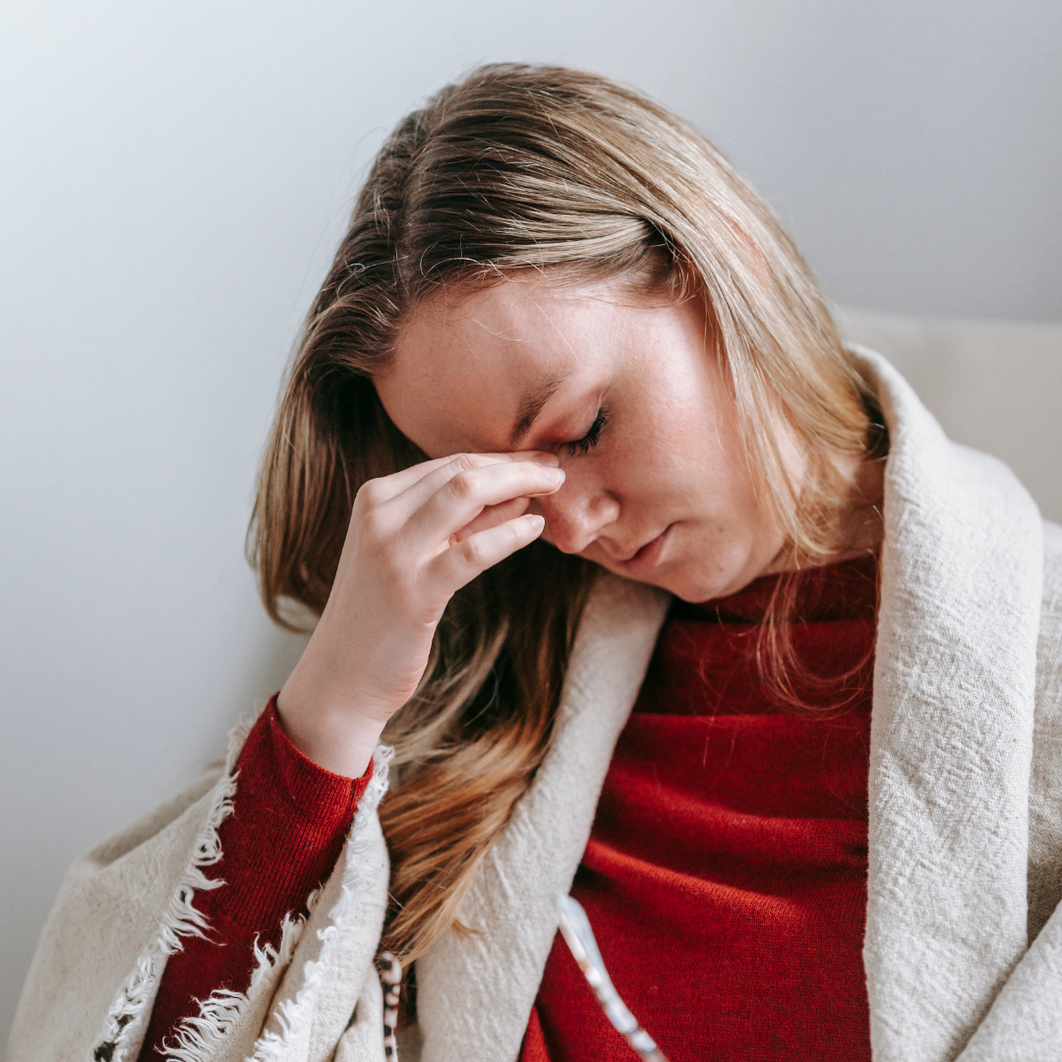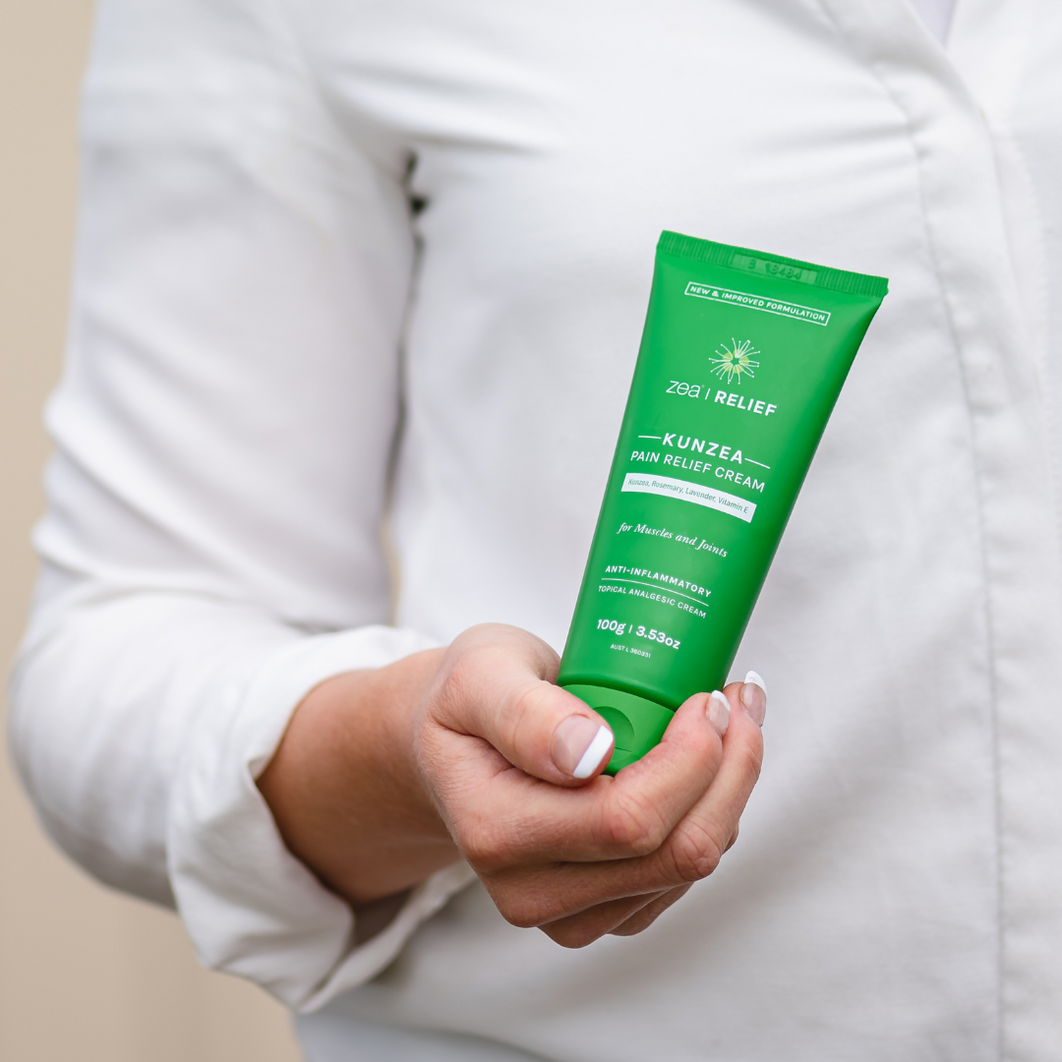Many people around the world are living with some form of chronic pain. Worldwide, arthritis is estimated to impact around 92.1 million adults.1 In Australia, 3.9 million people have some type of arthritis, while another 16% of the population live with back pain.2,3 Rest is an important strategy for pain relief, but did you know that exercise can also help to reduce pain?
Exercising for pain relief isn’t just about gentle stretching, although that is definitely important! Regularly moving your body in the right ways can not only bring some much needed relief but even prevent any further pain or injury. It’s all about how you move and remembering to always include a quick warm-up and cool-down routine.

Common causes of physical pain and injury
Musculoskeletal pain can come in the form of inflammation, tissue degeneration, joint pain, muscle stiffness and soreness. Some types of pain are easier to resolve than others, but with so many of us experiencing chronic pain, it is vital to have a game plan for prevention and relief.
Arthritis is at the top of the list for causes of pain. Arthritis is an umbrella term that includes osteoarthritis, rheumatoid and juvenile arthritis types and even gout. Around half of the people with diagnosed arthritis report moderate to severe pain.2
Back pain can be a serious, long-term issue for many people with life-altering consequences. The non-specific condition can be related to the actual spine itself, the muscles, nerves, or all of the above. It’s considered one of the leading causes of disease burden.3
Tendonitis/tendinopathy is another common condition that can be either acute or chronic. Its causes vary, but symptoms include pain at the site of the tendon, which can either increase slowly over time or cause a sudden attack of pain.3,4
With the many types of chronic musculoskeletal pain comes many forms of treatment and pain relief. That is why it’s always recommended that you work with your doctor and other healthcare practitioners to find the right combination of treatments.

What happens to the body if we don’t exercise regularly?
As the saying goes ‘if you don’t use it, you’ll lose it’ and that very much applies to exercise and the health and strength of our muscles and bones. A lack of regular movement and exercise, even if you are experiencing pain, can actually worsen pain and lead to a domino effect. Less movement can result in less mobility and more pain when you do attempt new movements.5
The body was made to move, our ancestors worked hard every day and built strong muscles and bones - without daily movement and physical challenges, the risk of chronic disease increases significantly and mental and cognitive health can also decline. The most noticeable change will likely be to muscle and bone strength, with muscle wastage starting in as little as two weeks of no exercise.5
Why exercise is a key remedy to pain relief
The good news is that the body also responds very quickly to new exercise and movement. So, it’s simply a matter of finding the right exercises to suit you and your lifestyle (and getting the okay from your doctor, of course!). Exercise can be a great foundational change to bring about relief and even a more positive outlook.

Exercises for back pain
Physical activities that may support pain include any movements that increase aerobic capacity and muscle strength - with particular attention on strengthening back muscles, such as the lumbar extensor muscles.
Recent studies have found better outcomes with a multidisciplinary approach.6 The benefit of including more than one type of exercise in your weekly routine includes exercising all major muscle groups, greater mental challenges and function, and you certainly won’t get bored of your workouts.
Exercises that improve lumbar flexion were shown to reduce pain in patients who currently had back pain.6 The best exercises for lumbar strength and flexibility include core strength and stability exercises.

Pilates includes helpful movements to relieve pain such as pelvic tilt, rolling like a ball, spinal stretch forward, the ‘saw’ (a twisted spinal stretch), supine ‘dead bugs’, and bridges (supine butt lift).
Yoga movements help to stretch and strengthen the back muscles. The best yoga poses for back pain include cat-cow, baby cobra, cobra and sphinx poses, child’s pose and supine spinal twist. As yoga is a mind-body exercise, it can help to alleviate emotional and physical stress and tension, which can further reduce back pain.
Back-friendly swimming styles, including breaststroke and freestyle.7
Exercises for joint pain
Avoiding exercise might feel like the only way to minimise joint pain, but movement can really help. How does it do this? Moving the joints helps keep stiffness at bay, while also improving circulation to the area. Circulation brings in nutrients and takes away debris that can result from inflammation and tissue damage.8
Regular activity is also shown to lubricate the cartilage of the joints. In the long-term, exercise helps you to maintain a healthy weight, or lose weight, as the case may be. For joint health, optimal weight is vital - unnecessary pressure on the joints causes more wear and discomfort.9
Try to avoid movements that focus on repetition where joints are involved and anything high intensity. Slow and steady is the key for joint pain, giving the joints (and you) a chance to ease into the movements and find your limits in terms of intensity, speed and time spent exercising.9
Moderate aerobic activity is a good place to start as it both aids the circulation and requires movement without too much repetition. From there, you can progressively increase your speed and intensity, always checking back in during and after your workout to ensure you aren’t in any pain.

Other exercises that are beneficial for reducing joint pain include Pilates, as many of the movements are mat-based, meaning you will be lying down and taking the pressure off the joints.9 There is also a greater emphasis on protecting the joints and strengthening the accessory muscles around the joints to keep them strong and prevent injury. Try taking a remedial Pilates class with a qualified instructor who can give clear instructions and let them know if you have any specific injuries or discomfort.
Speaking of taking pressure off the joints, swimming and aqua aerobics can be some of the best movements for relieving joint pain. Both aqua-based exercises will get your heart rate up, stimulating that circulation to aid healing and strengthening the muscles with the resistance of the water.9
Exercises for tendonitis and tendinopathy
Tendinopathy is a condition where the tendon cartilage begins to break down, causing pain and reduced physical ability. Tendonitis refers to inflammation of the tendon.10 If you have either of these conditions, then you know how hard it can be to go back to the sports or activities you used to do.
In a recent study, strengthening exercises were found to be the most effective form of exercise to relieve the pain from tendinopathy.11 However, resistance training to strengthen the affected tendons should start slowly and only after the pain has settled.
It’s suggested to start with bodyweight exercises twice a day for short periods of time (10-15 minutes), such as heal drops, calf raises or squats.12

Heavy Slow Resistance training (HSR) can then be started with the help of a qualified trainer or exercise physiologist. This type of exercise includes using weight or gym equipment. It requires the use of 70-85% of the maximum weight you can lift for 8 repetitions while still maintaining good form.12
It’s also important to work on building strength in areas that will help to reduce the pressure on the location of the affected tendon. Once you are ready to start building strength, it can be really beneficial to see a physiotherapist or exercise physiologist for specific exercises and to prevent injury.12
Post-exercise pain relief
Regardless of what exercises you choose to do, adding a quick cool-down to your routine is an absolute must. A cool-down helps to bring your breathing and heart rate back down if it’s been a cardio-heavy workout and stretching out hard-working muscles in a strength-training session. Just 5 minutes is all you need to take a handful of gentle stretches and breathe deeply into each stretch.
To aid your post-exercise cool down, we’ve created MAGZEA™ Sports Cooling Spray, a highly concentrated magnesium spray to soothe sore muscles and reduce tension. The addition of Kunzea and Peppermint provides relief from inflammation to improve workout recovery time.
You might want to use this in conjunction with our Kunzea Pain Relief Cream to relieve soreness and inflammation for targeted areas of pain.
Moving through pain
Exercise is an important part of staying healthy, but even more important is finding the right exercises to suit your body. Consider adding a few short sessions of exercise per week and reassessing your pain levels at the end of each week - and don’t forget to treat your mind and body to a post-workout cool-down with some stretches, deep breaths and your favourite products from the Zea Relief and Zea Active ranges.
ABOUT THE AUTHOR - JACINDA BRASS
A qualified Physical Training Instructor, Jacinda has a huge passion for health and wellness. As our Marketing Assistant & In-House Personal Trainer, she is the perfect person to assist both the Customer Service and Marketing teams. Her can-do attitude, drive and determination ensures both teams are supported and on track to do what we do best - help our customers stay happy and healthy. Her love for helping people stay active and healthy is her driving force.
Medical Disclaimer
All content by Australian Kunzea Pty Ltd, including, text, images, audio, or other formats, were created for informational purposes only. The content is not intended to be a substitute for professional medical advice, diagnosis, or treatment. To read our full medical disclaimer, click here.
References:
- Arthritis Foundation. Arthritis by The Numbers. Accessed December 2021 from https://www.arthritis.org/getmedia/e1256607-fa87-4593-aa8a-8db4f291072a/2019-abtn-final-march-2019.pdf
- Australian Institute of Health and Welfare. Arthritis. Updated August 2020, accessed December from https://www.aihw.gov.au/reports/chronic-musculoskeletal-conditions/arthritis-snapshot/contents/arthritis
- Australian Institute of Health and Welfare. Back problems. Updated August 2020, accessed December from https://www.aihw.gov.au/reports/chronic-musculoskeletal-conditions/back-problems/contents/what-are-back-problems
- Cleveland Clinic. Tendinitis. Reviewed December 2020, accessed December 2021 from https://my.clevelandclinic.org/health/diseases/10919-tendinitis
- Bowden Davies KA, Pickles S, Sprung VS, Kemp GJ, Alam U, et al. Reduced physical activity in young and older adults: metabolic and musculoskeletal implications. Therapeutic Advances in Endocrinology and Metabolism, 2019.
- Gordon R & Bloxham S. A Systematic Review of the Effects of Exercise and Physical Activity on Non-Specific Chronic Low Back Pain. Healthcare (Basel), 2016;4(2):22.
- Spine Health. 3 Essential Tips for Swimming with Back Pain. Written April 2016, accessed December 2021 from https://www.spine-health.com/blog/3-essential-tips-swimming-back-pain
- Arthritis Foundation. How Exercise Helps Your Joints. Written August 2021, accessed December 2021 from http://blog.arthritis.org/living-with-arthritis/exercise-benefits-for-joints/
- John Hopkins Arthritis Centre. Role of Exercise in Arthritis Management. Accessed December 2021 from




